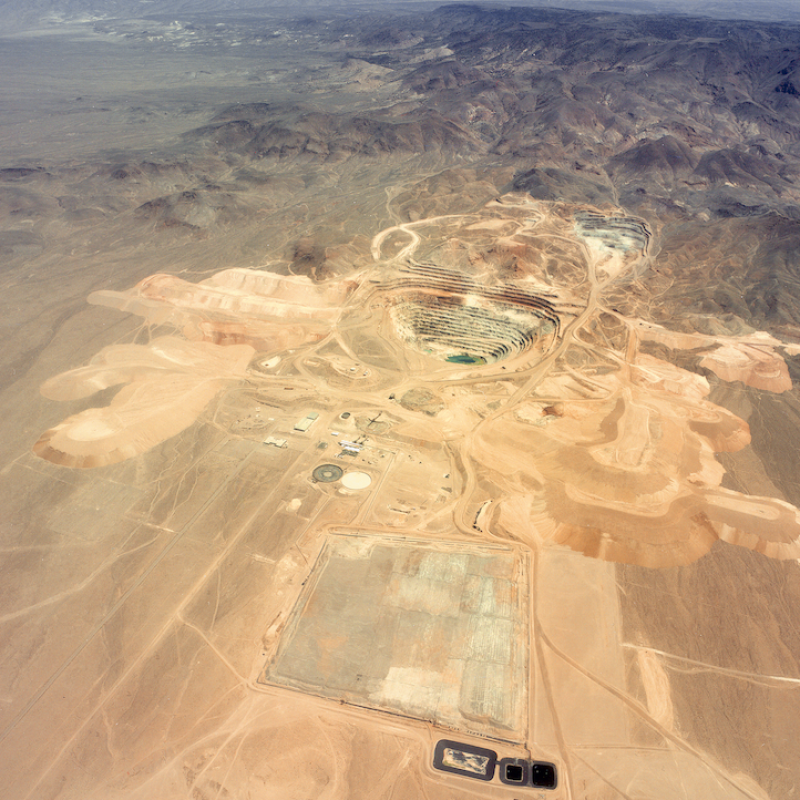
Pathfinder Tonopah is bringing together two historically mined resources at a brownfields site with existing infrastructure. After assaying historic drill core and pulps with a more complete suite of geochemistry and review of the geologic model, the company was encouraged to advance the project.
Pathfinder embarked on a robust metallurgical program, including new drilling and test work, to characterize the copper-enriched ores and to improve metal recoveries in the supergene blanket utilizing flotation methodologies. Further drilling encountered mineralization in zones that had previously been untested, and this information is expected to convert waste within the previous pit-constrained resource estimation to ore, as well as add new resources in zones between the supergene blanket and the previously known molybdenum mineralization. The core from these new areas of mineralization is still being processed and will be included in a resource update later this year.
The Hall Mine Complex is centered on a porphyry Cu-Mo system in the Western flanks of the San Antonio Mountains. The Hall Stock is a multi-phase, Southeasterly plunging quartz monzonite porphyry (66-70 Ma) that hosts much of the Cu-Mo mineralization. The porphyry intrudes a metamorphosed package of Late Paleozoic to Early Mesozoic sediments that have been variably mineralized by the porphyry system. Tertiary dikes and volcanics cut the porphyry mineralization, and some of these later intrusives appear to be associated with later structurally-controlled silver mineralization.
Basin and range faults cut portions of the system. The most prominent structure is the Northerly striking Liberty Fault, which dips to the West at ~40° and truncates the porphyry system to the West, bringing mineralized basement rock up against basin-fill alluvium and colluvium. Uplift and weathering of the Cu-Mo porphyry system resulted in the development of a near-surface and nearly horizontal supergene copper blanket.
Mineralization in the hypogene Cu-Mo porphyry is dominated by molybdenite (MoS2) and chalcopyrite (CuFeS2). The dominant copper mineral in the supergene blanket is chalcocite (Cu2S).
The Complex was mined for molybdenum by Anaconda and Cyprus in the 1980s and 1990s, mainly within the porphyry system. Equatorial Tonopah mined a portion of the supergene copper blanket in the late 1990s and early 2000s, which was largely hosted in the mineralized meta-sediments.
Recent drilling has indicated potential to expand the hypogene resources below the supergene blanket and above the Eastern side of the porphyry system, where zones of elevated molybdenum and copper mineralization have been observed.

Pathfinder is working with experts from three separate leading global firms, led by Blue Coast Research out of Parksville, BC. Metallurgical work has identified several ore types in the supergene copper zone, and test work is currently establishing parameters to optimize recovery of copper from the supergene material with a focus on flotation and hydrometallurgical methods.
Flotation methods for recovery of supergene copper may allow for development of a flowsheet that can use more than one crushing and milling stream feeding into a series of flotation circuits that can be slowly modified as mining progresses through the supergene blanket into the hypogene molybdenum mineralization, while still recovering molybdenum and potentially silver from the supergene resources.
Hydrometallurgical methods for recovery of supergene copper may allow for development of a flowsheet that delivers “green” copper cathodes and silver followed by development of a flotation plant as the mine passes into the hypogene ore.
We expect that results of this robust program will allow for efficient recovery of value from all minerals in the global resource.